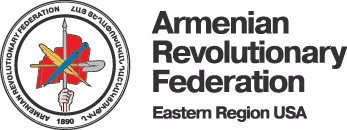A Response to Robert Fisk

By Movses Ter-Oganesyan
The following is a response to Robert Fisk’s article, “Echoes of Stalinism Abound in the Very Modern Azerbaijan-Armenia Conflict,” published in The Independent on Sat., April 9.
Through his decades of work, Robert Fisk has been a trumpeting voice for the international recognition of the Armenian Genocide or, as he puts it, the Armenian Holocaust.1 Fisk’s wording amply draws connections to the Jewish and Armenian experiences of the 21st century—both groups losing significant portions of their population to genocide. He has often said Hitler was among the first people to recognize the Armenian Genocide, when before invading Poland he proclaimed, “Who, after all, speaks today of the annihilation of the Armenians?”2
Because of Fisk’s objective writing about the Armenian Genocide in the past—often earning him vicious attacks from Turkish groups and individuals3—I questioned how he could embolden those same genocide deniers with his recent one-sided article about the unprecedented flare up between the Nagorno-Karabagh Republic (Artsakh/NKR) and Azerbaijan.4
Although titled, “Echoes of Stalinism Abound in the Very Modern Azerbaijan-Armenia Conflict,” Fisk does not explain how Stalin, acting as minister of nationalities in the 1920’s, in an attempt to appease Turkish leader Kemal Ataturk, transferred from Armenian to Azeri control the mountainous region of Karabagh (along with other significant portions of the First Republic of Armenia).5
During the “Four Day War” in early April 2016, news stations had indeed shown clips of Stalin completely irrelevant to this conflict. However, Fisk never explains Stalin’s relevance. He fails to clarify that isolating ethnic groups and redrawing state borders was a tactic mastered by Stalin to maintain authoritarian control by exploiting ethnic divide. As Sener Akturk wrote, “Ethnic engineering and discrimination were an important part of the Soviet state’s repertoire in controlling society, including the elites of the Union Republics.” Stalin artificially placed the Armenian majority population of Karabagh under Azeri control to create constant tension, making it easier to rule both groups. Indeed, the Karabagh conflict is abound by echoes of the notorious Soviet dictator. Fisk glosses over Stalin’s key role in the Karabagh conflict, and for reasons unexplained, focuses his energies on demonizing Armenian nationalism.
Fisk says he didn’t see Armenian government troops in Stepanakert—Karabagh’s capital. Instead, he claims he saw Armenian militia groups terrorizing Azeri villagers. He compares these militia groups to Turkish Ottoman forces who murdered and ethnically cleansed the Armenians during the genocide.
How can an esteemed writer like Fisk focus on barely-organized Armenian militias and not mention the state-sponsored terrorism by the special forces of the Soviet Union and Azerbaijan? With the wounds of the Armenian Genocide still festering, Armenians cannot simply forget the government-sanctioned deportation and slaughter of its people barely 25 years ago. Ignoring these facts may be convenient for Turkey and Azerbaijan, but it is shameful for western journalists.
The Republic of Armenia has consistently maintained that while it heavily supported the Armenians of Karabagh, the fighting was between the self-declared Nagorno-Karabagh Republic and the Azeri military. That explains why Fisk never saw Armenian government forces in the capital of Nagorno-Karabagh. Volunteers from Armenia did fight in the Karabagh War, but in mentioning that, one must also mention the volunteers from Turkey, the mercenaries from Chechnya, as well as the mujahedeen all fighting on the Azeri side. Was Armenia at war with Turkey, Chechnya, and Islamic extremists?
While drawing erroneous connections between the ethnic cleansing of Armenians during the genocide to the behavior of Armenian militia groups, Fisk never mentions that the regional Nagorno-Karabagh government held a referendum in February 1988 with an overwhelming vote in favor of joining Armenia. He also does not mention that the Azeri response to this decision was the real ethnic cleansing—in the form of brutal pogroms—against the Armenians in Sumgait, Kirovabad, and Baku, ultimately fueling the exodus of Armenians out of Azerbaijan and resulting in 400,000 Armenian refugees.6 At the start of the hostilities, the Azeris living in Armenia left unharmed, and were not butchered in the streets as were the Armenians.
As disturbing as these facts are, Fisk also leaves out one of the most insidious and overlooked triggers that instigated full-scale war: Operation Ring. Described by Thomas De Waal as the Soviet Union’s only civil war, the purpose of Operation Ring was the deportation of the civilian Armenian population in and around NKR. In an attempt to keep the oil-rich nation of Azerbaijan in the Soviet Union, under the guise of a “passport checking operation,” Soviet spetsnaz joined the Azeri Special Purpose Mobility Unit (OMON) forces in rounding up Armenian villagers and deporting them to Armenia proper.
As David Murphy writes, “[A] visit by a delegation of international human rights activists to NKAO [Nagorno-Karabagh Autonomous Oblast] recognized that both sides were guilty of violence, but the group’s report made clear that the Armenians were the principal victims of what can only be described as state-sponsored terrorism.”7 The report stressed the Azeri OMON unit’s abuse of the civilian population. Eight hundred and 16 people were killed and over 5,000 wounded during the 1991 operation. Conservative estimates of Armenians deported range from 5,000-7,000. Who knows how many more Armenians would have been killed without the protective presence of the Armenian militias? How can an esteemed writer like Fisk focus on barely-organized Armenian militias and not mention the state-sponsored terrorism by the special forces of the Soviet Union and Azerbaijan?
With the wounds of the Armenian Genocide still festering, Armenians cannot simply forget the government-sanctioned deportation and slaughter of its people barely 25 years ago. Ignoring these facts may be convenient for Turkey and Azerbaijan, but it is shameful for western journalists. Dismissing the Armenian position as nationalism does not give an accurate portrayal of the events that happened 25 years ago. It does nothing towards building “a parliament of man” in the Caucasus; to the contrary, it only encourages the beating of the war drum from the oil-rich dictatorship of Azerbaijan.
Movses Ter-Oganesyan is a political activist who has worked on a number of political campaigns. His interest in the Caucasus led him to study geopolitics. He is a graduate of California State University Northridge.
Notes
1 See http://www.independent.co.uk/voices/comment/armenian-genocide-to-continue-to-deny-the-truth-of-this-mass-human-cruelty-is-close-to-a-criminal-10188119.html
2 See http://www.independent.co.uk/voices/commentators/fisk/robert-fisk-the-forgotten-holocaust-463306.html
3 See http://armenians-1915.blogspot.com/2005/07/230-robert-fisk-pathological-liar-is.html and http://angelsof1915.blogspot.com/2011/06/bahrain-independent-i-smell-fisk.html
4 See http://www.independent.co.uk/voices/echoes-of-stalinism-abound-in-the-very-modern-azerbaijan-armenia-conflict-a6976421.html
5 Cornell, Svante. Small Nations & Great Powers: A Study of Ethnopolitical Conflict in the Caucasus
6 See https://www.hrw.org/reports/pdfs/u/ussr/ussr915.pdf
7 Murphy, David E. “‘Operation Ring’: The Black Berets in Azerbaijan,” The Journal of Soviet Military Studies, Vol. 5, No. 1, March 1992. p. 82.
Source: Armenian Weekly Mid-West

